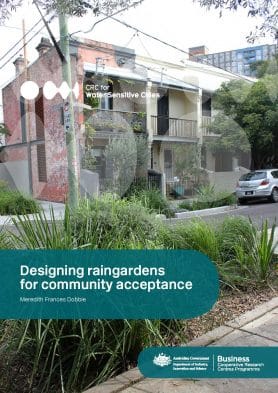Designing raingardens for community acceptance
Raingardens are innovative and visible examples of WSUD initiatives that might be expected to change the appearance of an urban street. Perception of raingardens will be influenced by the ‘perceptual lens’ through which the landscape is viewed. Attitudes constitute the perceptual lenses, and five perceptual lenses have been proposed: a scenic aesthetic; an ecological aesthetic; an aesthetic of care, perhaps influenced by knowledge; an aesthetic of attachment and identity; and an aesthetic of affordance. Understanding which lens is used in perceiving streetscapes with raingardens, and how the raingardens are appreciated, can inform guidelines for their design to meet both technical and aesthetic functions. In addition, management strategies and communication programs can be developed to promote the acceptance of raingardens.
This study was undertaken to determine how residents of established suburbs in Melbourne perceive, appreciate and value raingardens retrofitted into their own or neighbouring streets and streets in other suburbs. Eight streets were studied, four with raingardens and four without. Streets with raingardens were preferred: four streets with raingardens were amongst the five most preferred streetscapes. Attitudes thought to underpin the lenses operating in the perception of raingardens were associated with place attachment, landscape care and maintenance, satisfaction and affordance.
